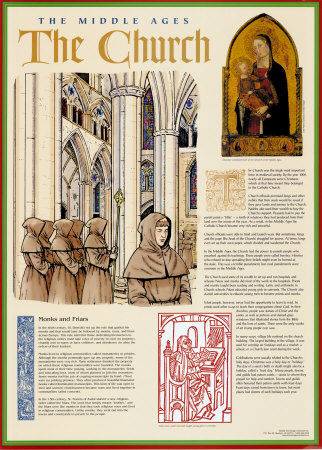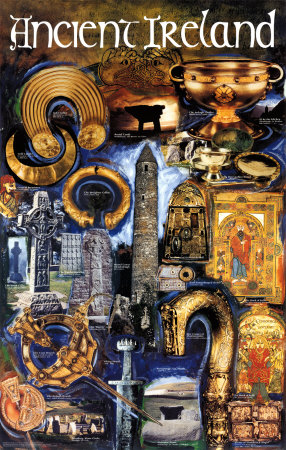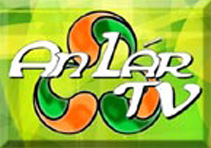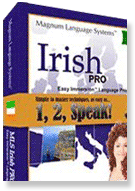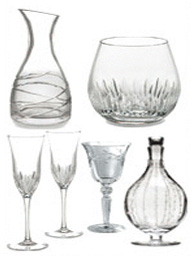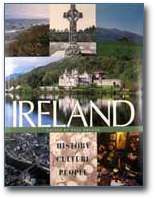Ancient Irish Relics
There is an enormous amount of ancient Irish relics that have been found in Ireland
over the centuries. These antiquities have been excavated from river beds, peat bogs,
ancient ruins and farmlands throughout the country. We can hardly imagine how many have
been found by primitive civilizations or by those uneducated in the value of these relics.
We can probably assume that there are at least as many that were either discarded or
destroyed, if not more, than have been preserved. The experts have studied these artifacts
and have many ways of dating and categorizing them but who really knows, unless it was
documented.
In the annals of Irish history, it wasn't until relatively recent times that these antiquarian items were kept and preserved. Soon there began the opening of museums and, for wealthy individuals, private collections were started. There was a time when antiques in Ireland could be purchased at minimal expense but that is no longer the case. As the collectors became more educated about these relics, they soon possessed the knowledge to differentiate between items of national interest and unimportant discoveries. The most remarkable collections of such objects are located for viewing at the Royal Irish Academy.
The Royal Irish Academy, for the Study of Polite Literature, Science, and Antiquities, began in 1786. The museum comprises the finest collection of Celtic antiquities known to exist. Most of the funds raised have been contributed by member subscriptions and by donations from patriotic individuals. Unfortunately, the government annual grant is small compared to the importance of the Academy.
Torques, which are head or neck ornaments, appear to have been common among the Gauls, Britons, and other Celtic people, from a very early period. Plates of gold, in the shape of a crescent, formed of small circular pieces of about an inch in diameter, have quite frequently been discovered in Ireland. They are usually ornamented with engraved borders; several examples are very plain, while others are engraved only on one side. The Academy has a display case containing many torques and, in the same case, is a fine and richly carved bulla, found about a century ago in the bog of Allen. A bulla is a round lead stamp or seal, incised to make an impression, and used to enclose or to authenticate documents, especially in a religious context.
In the Academy Museum, are examples of almost every kind of Celtic ornament of gold, several of which are unique. The objects of the early Christian period is a class of antiquities in which the Royal Irish Academy is rich. The ancient quadrangular bells of the iron or bronze era appear to have been used as early as the time of St. Patrick. They are documented in the lives of most of the early saints, as well as in the Annals of the Four Masters and other ancient writings. Both the clergymen and the laymen of Ireland, Scotland, and Wales held such devotion and respect for these bells that they were as afraid of swearing falsely by them, as by the Gospels, and that they would be severly punished. The bells so highly revered by the Irish during the middle ages had belonged to some of the early founders of Christianity. They had been preserved in a monastery founded by the saint, or elsewhere, under the protection of an hereditary keeper.
There are numerous sepulchral urns, several of which may be more ancient than ones discovered in Great Britain. There is one urn of stone said to have been brought from the mound of Nowth, in County Meath. The sides are sculpted with what appears to be the sun and the moon but, is otherwise, not decorated. Another one is from a grave at Kilmurry, which is made of clay, and an urn found in the mound of Donagare, in County Antrim, is decorated in an unusual manner. The Museum contains many urns in perfect condition, and several fragments, but space is limited, so they are not all displayed.
Pastoral crooks and crosiers, which belonged to the early fathers of the Irish Church, seem to have been regarded as holy. Although the Danes were infamous for pillaging church property, there are still many examples of remarkable beauty and ornamentation preserved today. There is not much variety in the shape of the early crooks; they are simply curved like those used by shepherds. They are usually elaborately ornamented with interwoven bands, sometimes representing serpents. The Academy includes several examples which are not only beautiful, but are in an excellent state of preservation.
The Cross of Cong, which is the pride of the Academy collection, shows the advancement made by the Irish artisans in many of the arts and in manufacturing skills, prior to the invasion by the English. It was made in County Roscommon by a native Irishmen at about 1123, in the reign of Turlogh O'Conor, father of Roderick, and the last monarch of Ireland. It contains what was supposed to be a piece of the true cross, and it is recorded in Irish and in Latin. The extremely minute and elaborate ornamentation, with which it is completely covered, and a portion of which is worked in pure gold, would be hard to duplicate even today. The designs consist of tracery and grotesque animals, intricately entwined, and similar to the decorations found upon stone crosses of the same period. A large crystal set at the center enshrines the wood from the true cross. This artifact of unequalled measure was presented to the Academy by the late Professor MacCullagh.
Among some of the relics from a very early period is a stone chalice. Very few chalices prior to the twelfth century remain in Ireland and, of those, they are very plain. A silver chalice, found in the ruins of Kilmallock Abbey, was melted many years ago by a silversmith in County Limerick. Cups of stone were very common among the Irish. An ancient stone vessel, triangular in shape, remains by a holy well in Columbkill's Glen, in County Clare, and another was found recently in County Meath, near the ruins of Ardmulchan Church.
Copies of the Gospels, and other sacred writings used by the early saints of Ireland, were preserved by their successors and were protected in cases made of yew, or some other durable wood. Many of the cases were enclosed in silver boxes, or bronze boxes plated with silver, and sometimes gilt. In several examples, a third case has been added; several of those remain in a high state of preservation. They are the Caah, or Cathach; the Meeshac; and the Leabhar Dhimma.
The Caah is made of brass plates, riveted to one another, decorated with gems and trimmed in gold and silver. It contains a plain wooden box, enclosing a missal, a copy of the ancient Latin translation of the Psalms, consisting of fifty-eight sections. It is believed that it was written by the hand of St. Columba, the Apostle of the Northern Picts, and founder of a great number of monasteries in Ireland, his native country. Evidently a more recent addition made by Cathbar O'Donell, the top is decorated with a silver plate, gilt and divided into three compartments. The Caah appears to have been handed down by the O'Donell family, of which Saint Columba was a member.
The Domnach Airgid is the most precious relic of it's kind remaining in Ireland. It contains a large portion of the copy of the Holy Gospels used by Saint Patrick during his mission in Ireland, which he then presented to Saint Macarthen. Unfortunately, the pages have become firmly attached to each other, however, it is in the process of being restored. The manuscript has been described as having three distinct covers. The first is made of yew, the second of copper plated with silver, and the third of silver plated with gold. The outer cover has many common features of the Caah but it is not as ancient. Of course, the collection of ancient Irish relics is much too large to mention everything. However, a visit to the Royal Irish Academy in Dublin would be worth your while.
In the annals of Irish history, it wasn't until relatively recent times that these antiquarian items were kept and preserved. Soon there began the opening of museums and, for wealthy individuals, private collections were started. There was a time when antiques in Ireland could be purchased at minimal expense but that is no longer the case. As the collectors became more educated about these relics, they soon possessed the knowledge to differentiate between items of national interest and unimportant discoveries. The most remarkable collections of such objects are located for viewing at the Royal Irish Academy.
The Royal Irish Academy, for the Study of Polite Literature, Science, and Antiquities, began in 1786. The museum comprises the finest collection of Celtic antiquities known to exist. Most of the funds raised have been contributed by member subscriptions and by donations from patriotic individuals. Unfortunately, the government annual grant is small compared to the importance of the Academy.
Torques, which are head or neck ornaments, appear to have been common among the Gauls, Britons, and other Celtic people, from a very early period. Plates of gold, in the shape of a crescent, formed of small circular pieces of about an inch in diameter, have quite frequently been discovered in Ireland. They are usually ornamented with engraved borders; several examples are very plain, while others are engraved only on one side. The Academy has a display case containing many torques and, in the same case, is a fine and richly carved bulla, found about a century ago in the bog of Allen. A bulla is a round lead stamp or seal, incised to make an impression, and used to enclose or to authenticate documents, especially in a religious context.
In the Academy Museum, are examples of almost every kind of Celtic ornament of gold, several of which are unique. The objects of the early Christian period is a class of antiquities in which the Royal Irish Academy is rich. The ancient quadrangular bells of the iron or bronze era appear to have been used as early as the time of St. Patrick. They are documented in the lives of most of the early saints, as well as in the Annals of the Four Masters and other ancient writings. Both the clergymen and the laymen of Ireland, Scotland, and Wales held such devotion and respect for these bells that they were as afraid of swearing falsely by them, as by the Gospels, and that they would be severly punished. The bells so highly revered by the Irish during the middle ages had belonged to some of the early founders of Christianity. They had been preserved in a monastery founded by the saint, or elsewhere, under the protection of an hereditary keeper.
There are numerous sepulchral urns, several of which may be more ancient than ones discovered in Great Britain. There is one urn of stone said to have been brought from the mound of Nowth, in County Meath. The sides are sculpted with what appears to be the sun and the moon but, is otherwise, not decorated. Another one is from a grave at Kilmurry, which is made of clay, and an urn found in the mound of Donagare, in County Antrim, is decorated in an unusual manner. The Museum contains many urns in perfect condition, and several fragments, but space is limited, so they are not all displayed.
Pastoral crooks and crosiers, which belonged to the early fathers of the Irish Church, seem to have been regarded as holy. Although the Danes were infamous for pillaging church property, there are still many examples of remarkable beauty and ornamentation preserved today. There is not much variety in the shape of the early crooks; they are simply curved like those used by shepherds. They are usually elaborately ornamented with interwoven bands, sometimes representing serpents. The Academy includes several examples which are not only beautiful, but are in an excellent state of preservation.
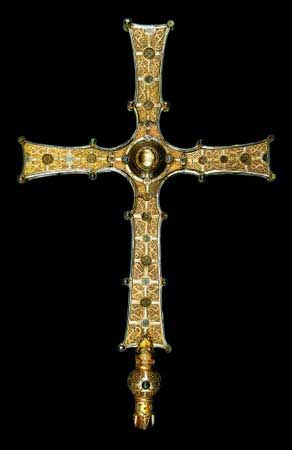 Cross of Cong |
The Cross of Cong, which is the pride of the Academy collection, shows the advancement made by the Irish artisans in many of the arts and in manufacturing skills, prior to the invasion by the English. It was made in County Roscommon by a native Irishmen at about 1123, in the reign of Turlogh O'Conor, father of Roderick, and the last monarch of Ireland. It contains what was supposed to be a piece of the true cross, and it is recorded in Irish and in Latin. The extremely minute and elaborate ornamentation, with which it is completely covered, and a portion of which is worked in pure gold, would be hard to duplicate even today. The designs consist of tracery and grotesque animals, intricately entwined, and similar to the decorations found upon stone crosses of the same period. A large crystal set at the center enshrines the wood from the true cross. This artifact of unequalled measure was presented to the Academy by the late Professor MacCullagh.
Among some of the relics from a very early period is a stone chalice. Very few chalices prior to the twelfth century remain in Ireland and, of those, they are very plain. A silver chalice, found in the ruins of Kilmallock Abbey, was melted many years ago by a silversmith in County Limerick. Cups of stone were very common among the Irish. An ancient stone vessel, triangular in shape, remains by a holy well in Columbkill's Glen, in County Clare, and another was found recently in County Meath, near the ruins of Ardmulchan Church.
Copies of the Gospels, and other sacred writings used by the early saints of Ireland, were preserved by their successors and were protected in cases made of yew, or some other durable wood. Many of the cases were enclosed in silver boxes, or bronze boxes plated with silver, and sometimes gilt. In several examples, a third case has been added; several of those remain in a high state of preservation. They are the Caah, or Cathach; the Meeshac; and the Leabhar Dhimma.
The Caah is made of brass plates, riveted to one another, decorated with gems and trimmed in gold and silver. It contains a plain wooden box, enclosing a missal, a copy of the ancient Latin translation of the Psalms, consisting of fifty-eight sections. It is believed that it was written by the hand of St. Columba, the Apostle of the Northern Picts, and founder of a great number of monasteries in Ireland, his native country. Evidently a more recent addition made by Cathbar O'Donell, the top is decorated with a silver plate, gilt and divided into three compartments. The Caah appears to have been handed down by the O'Donell family, of which Saint Columba was a member.
The Domnach Airgid is the most precious relic of it's kind remaining in Ireland. It contains a large portion of the copy of the Holy Gospels used by Saint Patrick during his mission in Ireland, which he then presented to Saint Macarthen. Unfortunately, the pages have become firmly attached to each other, however, it is in the process of being restored. The manuscript has been described as having three distinct covers. The first is made of yew, the second of copper plated with silver, and the third of silver plated with gold. The outer cover has many common features of the Caah but it is not as ancient. Of course, the collection of ancient Irish relics is much too large to mention everything. However, a visit to the Royal Irish Academy in Dublin would be worth your while.
Disclaimer: LittleShamrocks.com is an affiliate website that receives commissions from sales of the products listed. We have purchased and sampled many, but not all, of the products on these pages.
© Copyright LittleShamrocks.com. All Rights Reserved.

